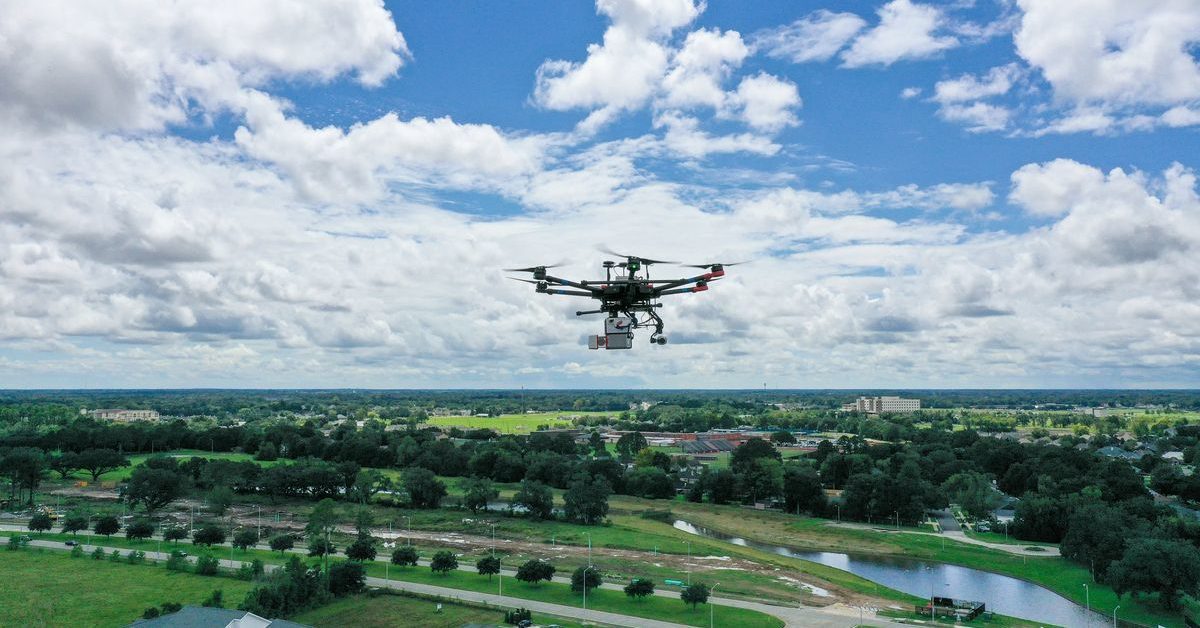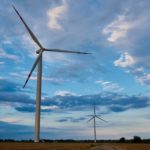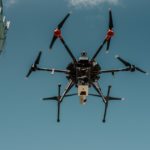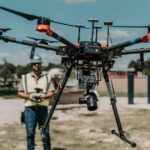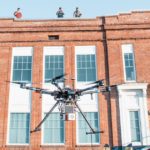Also referred to as an aerial survey, drone aerial inspections are carried out by using unmanned aerial vehicles (UAVs) for a non-intrusive, in-depth examination of a specific area or structure. UAVs come equipped with high-resolution cameras, LiDAR sensors, and other technology that capture detailed images of structures and send them remotely to inspectors.
In this article, we’ll look at why aerial drone inspections are important and beneficial, and how industry standards and laws affect them.
Why are Aerial Drone Inspections Important?
We’ve seen a lot recently about drone technology being used in the media as a simple, inexpensive way to capture beautiful photos of landscapes or events.
With so many different types of infrastructures across industries like agriculture, power generation, utilities, public safety, and construction, drones are also proving to be the best method to carry out complex safety inspections with incredible accuracy.
To stay safe and profitable, these structures need to be routinely inspected and aerial inspections allow for a comprehensive scan without the need for so much time and manpower. Through these routine checkups, companies can ensure flaws and potential danger zones are spotted early on so they can be addressed right away.
Traditional inspection techniques can be costly and come with significant levels of risks to the inspectors. Powerline inspections are an example of this because manual inspections require an inspector to climb the lines or use a helicopter, both of which are time-consuming, expensive, and can be dangerous.
Using drones for aerial inspections cuts costs and eliminates the need for inspectors to put themselves at risk. With drone-based inspections, companies can complete inspections faster and safer, which ultimately improves efficiency.
What are the Benefits of Aerial Drone Inspections?
Aerial inspections done with drones come with lots of benefits, including being more cost and time-efficient, as well as providing a much higher level of safety. We’ll take a closer look at the benefits below.
Cost Reduction
In general, the more dangerous an inspection is, the more expensive it will be. This is because if your inspection staff are more at risk, you’ll generally have to pay them more. There’s also a need for bulky, costly machinery like cranes, as well as temporary structures like scaffolding, tall ladders, or aerial lifts.
By using drones, companies don’t have to rely on heavy machinery or large vehicles and can invest a fraction of the cost in a small drone that a small team can operate.
Time Efficient
Companies can also cut off a lot of time from the inspection process because they won’t have to spend time arranging for the use of a barrage of equipment. Drones generally don’t require weeks or months of planning the way that other traditional inspection processes do.
During traditional inspections, inspectors have to climb the structures and stop frequently to make sure every part is inspected.
Drones, however, can climb the height of most buildings and structures in a matter of minutes. Because they help perform the inspections so much faster, they can also help avoid the need for shutting down operations for weeks or days during the inspection.
Safety Improvement
It’s undeniable that inspections can be risky work, and technicians already face a variety of precarious situations like working with hazardous materials and in small spaces, not to mention having to work at extreme heights.
According to data from XSPlatforms, a total of 711 workers died of work-related “fall from height” accidents in 2019 (which is the most recent data available). This accounted for 37% of all fatal workplace accidents in the construction industry.
Working at great heights is a dangerous part of any job, but visual inspection is a must in order to identify problem areas in a structure. Aerial drone inspections can eliminate the need for climbing because a technician wouldn’t have to be in the air physically inspecting any structures.
Instead, as we discussed earlier, technicians can operate safely from the ground and take as much time as they need. They can also repeat the inspection if needed with zero risk, no matter how many times they need to try again.
Precision
Aerial drone inspections can reveal trouble spots by providing high-quality visuals with much more detail and on a larger scale than a manual inspection could. A drone’s small size allows it to get close to structures and maneuver its way around hard-to-access areas, which allows even the smallest details to be captured.

Using drones for aerial inspections can also mean taking advantage of the recording features most drone technology comes equipped with. Rather than rely on written reports, companies can simply access the surveillance footage from an inspection drone.
It would be possible to gain an in-depth look at a specific point of inspection at any time, from anywhere.
Are There Laws for Aerial Drone Inspections?
Given that UAVs have been used a lot recently for recreation, there have been concerns about safety and privacy rights. Because of these concerns, most regions have regulations regarding the commercial and industrial use of UAVs, but there aren’t necessarily laws in place around drone inspections (at least in the criminal sense).
A lot of industries use structures that could pose a danger without proper maintenance. These regulations could require frequent inspections, and aerial drone inspections make the best choice in a lot of these cases.
There are also policies in many nations that specify that industries follow certain standards during inspections. These standards are usually created by associations within the inspection niche.
Are There Industry Standards for Aerial Drone Inspections?
As we mentioned earlier, countries usually set up regulations mandating inspection standards. These are industry requirements that were created to ensure the safety of the public. Industries that handle high-risk structures like pressure vessels, boilers, nuclear power plants, or containers with toxic chemicals have to follow strict safety rules.
Two examples of entities that create the safety standards for certain industries are the American Petroleum Institute (API), which sets the standards for companies in the energy industry, and the American Society of Mechanical Engineers (ASME), which is in charge of establishing the standards for boilers and pressure vessels.
Some regulations may require that a representative from the inspection body is present for the inspection itself to make sure that inspections were carried out per mandated standards. These representatives are trained and evaluated before earning a certificate enabling them to have authority at the site.
When it comes to aerial drone inspections, standard-making organizations don’t suggest which drone products to use. Instead, it falls to individual inspectors to pick which drone they want to use.
What Government Entities Have Authority Over Aerial Drone Inspections?
UAV regulation usually falls under the jurisdiction of aviation authorities. As drone technology is being used more and more, legislators are scrambling to keep up with its progress. To help you get a better idea of which government entities have a hand in regulating drone inspections, we’ve put together a list below of some recent examples of government policies regarding drones.
- In August 2016, the US Federal Aviation Administration (FAA) released Part-107 of the Federal Aviation Regulations, which addresses UAV operating regulations, pilot certification, and device certification.
- The UK Civil Aviation Authority unveiled CAP 722—Unmanned Aircraft System Operations in UK Airspace—to regulate the operation of Remotely Piloted Aircraft Systems (RPAS) in the UK.
- Canada’s government has also created new rules as well as amending older ones regarding the certification and compliance requirements for drones under section 602.41 of Canadian Aviation Regulations SOR/96-433.
- In December 2016, the European Council introduced the European Aviation Safety Agency (EASA) Basic Regulation. This bill contains the first-ever union-wide standard for the permission of civil drones to operate securely in European airspace. The Aviation Safety Agency’s responsibilities also changed with this new bill. EASA will also draft regulations that will make it easier for policies to adjust as technology advances.
Final Thoughts
Manual aerial inspections can be dangerous. They take time and resources and sometimes aren’t as precise as you need. When drones are used, they can be operated from a safe distance and provide more in-depth information.
Drones work fast and cost quite a bit less than manual inspections. When you’re picking a drone service provider, it’s important to do your research and find out if they comply with industry standards. Next time your team needs to conduct an aerial survey, consider drone aerial inspections for more efficient safety, cost, and time measures.
